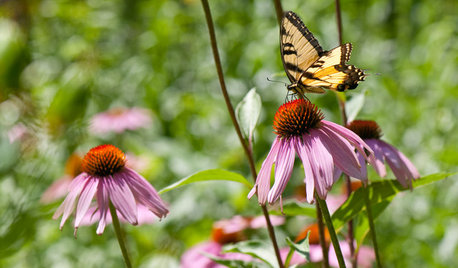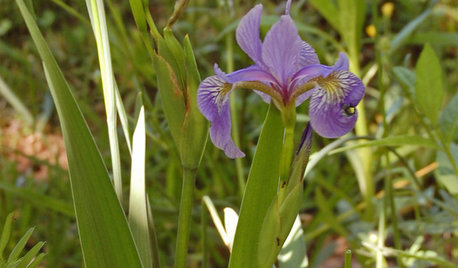Liriodendron tulipifera
coralbelle
16 years ago
Related Stories

FALL GARDENINGHouzz Call: Show Us Your Fall Color!
Post pictures of your fall landscape — plants, leaves, wildlife — in the Comments section. Your photo could appear in an upcoming article
Full Story
SPRING GARDENING7 Spectacular and Practical Spring-Flowering Trees
Put on a beauteous show in the garden with a landscape tree awash in flowers — just do your homework first
Full Story
LANDSCAPE DESIGNBeautiful Noise: How to Create a Symphony in Your Garden
Take your surroundings to another level by introducing the element of sound with ground covers, water features and wind catchers
Full Story
GARDENING GUIDESBe Your Own Best Florist With a Bouquet Garden
Shop your backyard for gorgeous floral arrangements — these ideas will help you bring the garden to the table beautifully
Full Story
PLANTING IDEASModern Planting Ideas From a Historic English Garden
Low-maintenance, climate-fitting plants are just the beginning of the good things in this bishop’s updated garden
Full Story
GARDENING GUIDESEntice Eastern Tiger Swallowtails With Summer Flowers
Grow nectar-rich native bloomers and larval host plants for these endearing butterflies
Full Story
GARDENING GUIDESBackyard Birds: Northern Cardinals in the Snow, and Other Red Birds
Brilliant crimson feathers make these friends stand out in a crowd
Full Story
GARDENING GUIDESGreat Design Plant: Iris Versicolor
A versatile native iris for bridging wet and dry gardens
Full StoryMore Discussions









ken_adrian Adrian MI cold Z5
quirkyquercus
Related Professionals
Arnold Landscape Architects & Landscape Designers · Carson Landscape Architects & Landscape Designers · Horsham Landscape Architects & Landscape Designers · Boca Raton Landscape Contractors · Dallas Landscape Contractors · Flagstaff Landscape Contractors · Franklin Landscape Contractors · Huntington Landscape Contractors · Little Ferry Landscape Contractors · North Lauderdale Landscape Contractors · West Coon Rapids Landscape Contractors · Maple Heights Landscape Contractors · Bainbridge Island Decks, Patios & Outdoor Enclosures · Chandler Decks, Patios & Outdoor Enclosures · Chesapeake Ranch Estates Stone, Pavers & Concretebasic
Dibbit
cascadians
MissSherry
coralbelleOriginal Author
treeguy123
treelover3
Embothrium
Embothrium
quirkyquercus
Embothrium
coralbelleOriginal Author
klavier
MissSherry
Embothrium
wisconsitom
Embothrium
philinsydney1
Embothrium
MissSherry
MissSherry
bengz6westmd
flora_uk
wisconsitom
Embothrium
MissSherry
jqpublic
radagast
MissSherry